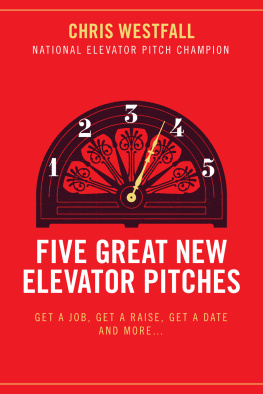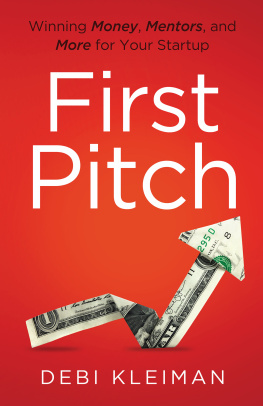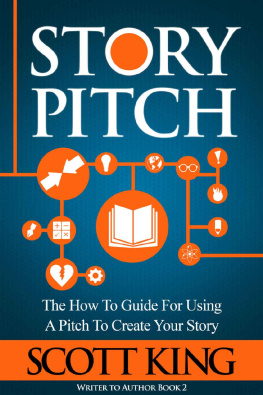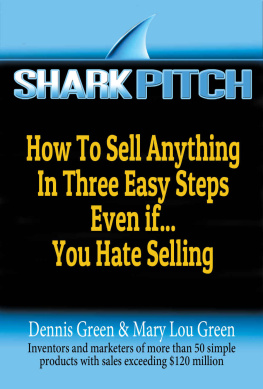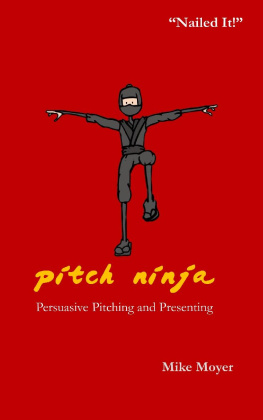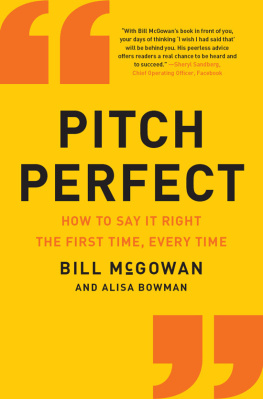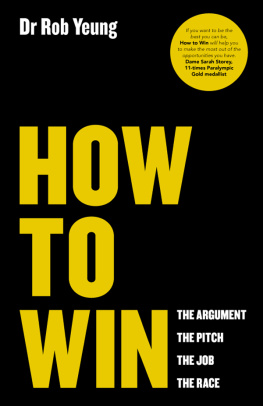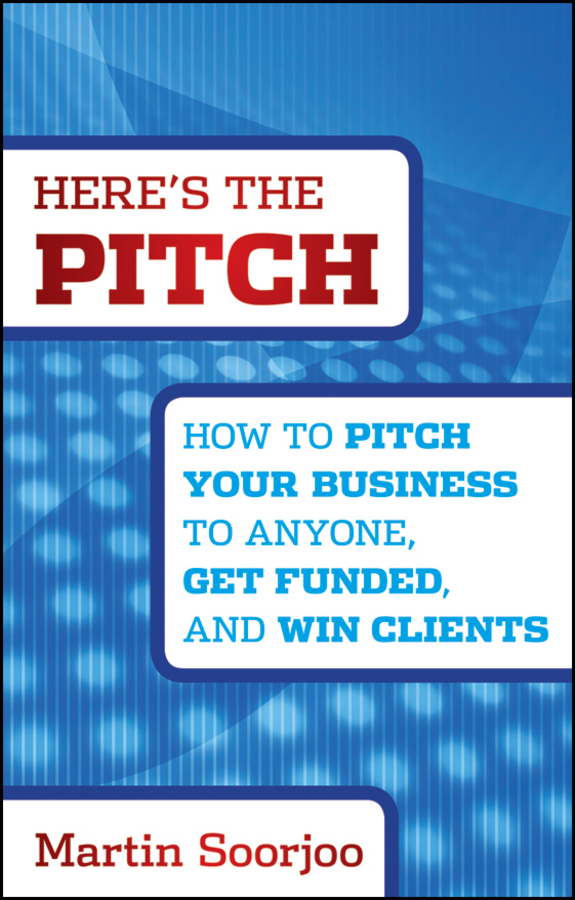Contents

Copyright 2012 by Martin Soorjoo. All rights reserved.
Published by John Wiley & Sons, Inc., Hoboken, New Jersey.
Published simultaneously in Canada.
No part of this publication may be reproduced, stored in a retrieval system, or transmitted in any form or by any means, electronic, mechanical, photocopying, recording, scanning, or otherwise, except as permitted under Section 107 or 108 of the 1976 United States Copyright Act, without either the prior written permission of the Publisher, or authorization through payment of the appropriate per-copy fee to the Copyright Clearance Center, Inc., 222 Rosewood Drive, Danvers, MA 01923, (978) 750-8400, fax (978) 646-8600, or on the web at www.copyright.com . Requests to the Publisher for permission should be addressed to the Permissions Department, John Wiley & Sons, Inc., 111 River Street, Hoboken, NJ 07030, (201) 748-6011, fax (201) 748-6008, or online at http://www.wiley.com/go/permissions .
Limit of Liability/Disclaimer of Warranty: While the publisher and author have used their best efforts in preparing this book, they make no representations or warranties with respect to the accuracy or completeness of the contents of this book and specifically disclaim any implied warranties of merchantability or fitness for a particular purpose. No warranty may be created or extended by sales representatives or written sales materials. The advice and strategies contained herein may not be suitable for your situation. You should consult with a professional where appropriate. Neither the publisher nor author shall be liable for any loss of profit or any other commercial damages, including but not limited to special, incidental, consequential, or other damages.
For general information on our other products and services or for technical support, please contact our Customer Care Department within the United States at (800) 762-2974, outside the United States at (317) 572-3993 or fax (317) 572-4002.
Wiley publishes in a variety of print and electronic formats and by print-on-demand. Some material included with standard print versions of this book may not be included in e-books or in print-on-demand. If this book refers to media such as a CD or DVD that is not included in the version you purchased, you may download this material at http://booksupport.wiley.com . For more information about Wiley products, visit www.wiley.com .
Library of Congress Cataloging-in-Publication Data:
Soorjoo, Martin, 1967
Heres the pitch: how to pitch your business to anyone, get funded, and win clients/Martin Soorjoo.
p. cm.
Includes bibliographical references.
ISBN 978-1-118-13752-9 (cloth); ISBN 978-1-118-22536-3 (ebk); ISBN 978-1-118-23884-4 (ebk); ISBN 978-1-118-26343-3 (ebk)
1. Business presentations. 2. Entrepreneurship. 3. Success in business.
I. Title.
HF5718.22.S735 2012
658.4'52dc23
2011043889
To my mother and father for being the greatest parents any son could hope for.
Acknowledgments
This book is a collaborative effort that would not have come about but for the inspiration, support, input, feedback, and patience of family, friends, colleagues, and the team at John Wiley & Sons, Inc.
To my editor, Dan Ambrosio at Wiley, for first suggesting I write Heres the Pitch and for always being on the end of the phone. To my production editor, Lauren Freestone, for her excellent detective work.
To my mother, Jennifer, for her consistent support on multiple fronts.
To my wife, Margo, for putting up with me ruining our summer, but willing to still provide feedback and suggestions.
To my colleague, Jamie, at the Investor Pitch Clinic for his constructive feedback.
To Symon Drake-Brockman, Managing Partner at Pemberton Capital Advisors, for his mentorship, friendship, and providing me with my first insights into the mind of a seasoned investor.
To Kate for never hesitating to give me the bottom line.
And to the late Robert Davies, founding CEO of the Prince of Waless International Business Leaders Forum, for his mentorship, friendship, and insights into the minds of Fortune 500 companies.
To San Franciscos Radio Alice for providing the background music which always makes burning the midnight oil a more enjoyable experience.
And last, to the hero entrepreneurs for whom this book is intended. Your optimism, vision, and courage continually inspire me.
Introduction
Lifes a Pitch
The only reason to give a speech is to change the world.
John F. Kennedy
Former Chief Evangelist of Apple and entrepreneur supremo Guy Kawasaki tapped into the driving force of entrepreneurs when he named his blog How to Change the World. Although money and success are prized, when entrepreneurs talk with passion about their product or service, they talk in terms of how it will help people or change lives.
It is passion and vision that enable entrepreneurs to make great sacrifices and take risks that transform their dream to reality. For many entrepreneurs, there is a point when the pitch becomes the opportunity to take the dream to the next level. So often, however, those same qualities that make achieving great things possible fail to take shape or appear during the pitch.
Those Who Aspire Must Inspire
Throughout history, great speeches have moved people and nations to take action and bring about change. Leaders have understood the power of a well-crafted speech, whether Abraham Lincolns Gettysburg Address or Martin Luther King Jr.s I Have a Dream speech, to inspire its audience. The late Steve Jobs was a master at inspiring people through his annual Macworld presentations, connecting with his audience and taking them on an exciting, unpredictable journey.
Yet although history shows us that you can only move people to take action by reaching both their hearts and minds, the vast majority of unsuccessful pitches are data dumps that reach neither. Instead, more often than not, they induce Death by PowerPoint.
It is not enough for a pitch to simply inform. It must also engage and inspire. To achieve the desired impact, a pitch must, among other things, combine conversation, storytelling, and sales. Facts are never enough, and efficiency should not be confused with effectiveness .
Pitching in a Tough Climate
The collapse of the financial markets in 2008 has placed the entrepreneur center stage. The loss of jobs and job security has led to people of all ages, from all walks of life, aspiring to become entrepreneurs. Discussion is frequent in the media about whether entrepreneurship and innovation offer the best way out of the recession. An emerging theme of hero entrepreneurs was recognized by U.S. President Barack Obama in 2010, when he declared November 19 National Entrepreneurs Day.
As the new generation of entrepreneurs is discovering, however, surviving and succeeding as an entrepreneur is more challenging than ever. According to the U.S. Small Business Association (SBA), at least 50 percent of start-ups fail within the first five years. Of those that continue, many barely survive.
Lack of capital is one of the primary reasons that new businesses fail. The collapse of the financial markets has meant that banks have stopped lending to small businesses and that investors are wary of start-ups.
This grim picture is reinforced by research that indicates that when it comes to pitching to investors, entrepreneurs have a 1 in 300 chance of success. On the sales front, companies have less money to spend, which has meant that winning a big sales contract is tougher than ever.


